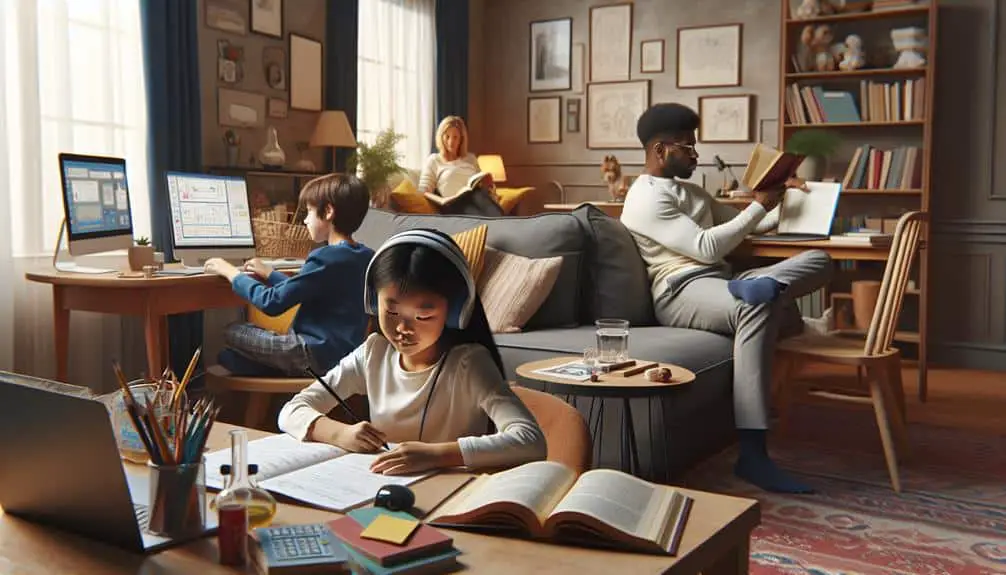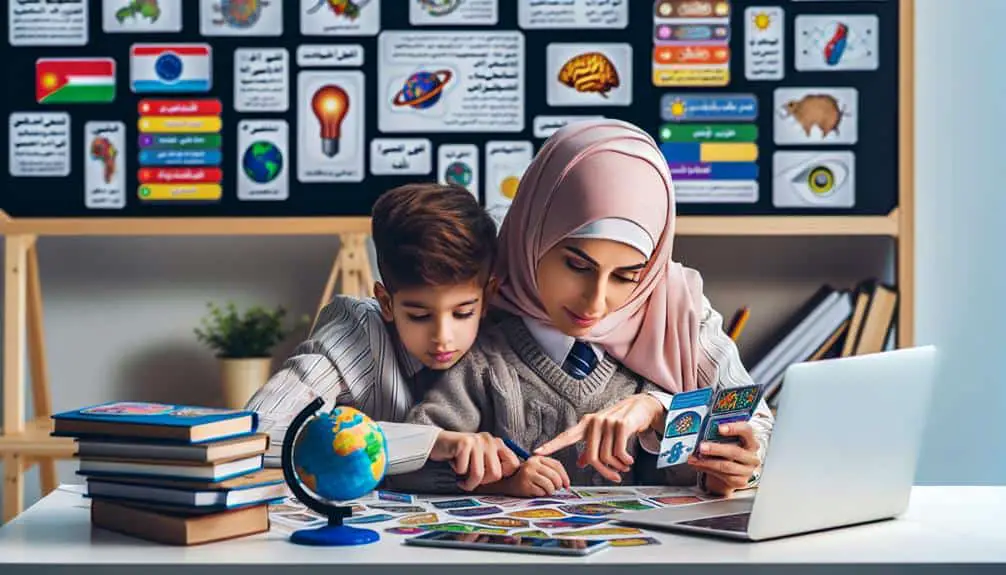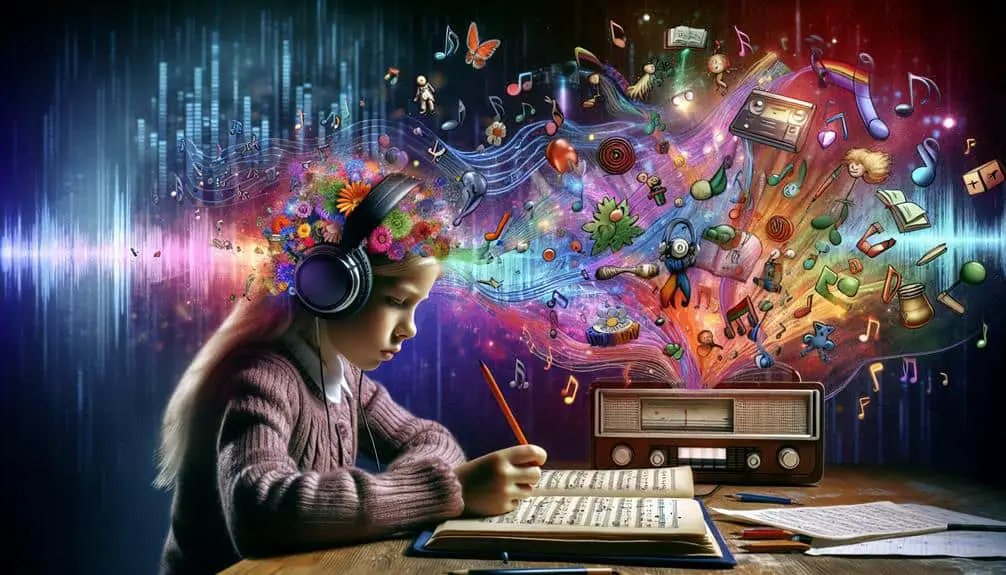Enhance your homeschooling by tailoring teaching methods to different learning styles. Recognize visual, auditory, or kinesthetic preferences. Use visuals for visual learners, discussions for auditory learners. Adapt your curriculum to engage individual strengths. Utilize various tools according to their style. Implement Howard Gardner's Multiple Intelligence Theory to nurture diverse strengths. Incorporate hands-on activities for interactive learning experiences. Assessments should reflect each child's strengths. By leveraging multiple learning styles, you create engaging educational experiences that cater to individual learners' needs.
Key Points
- Identify and cater to visual, auditory, and kinesthetic learning styles.
- Tailor curriculum with visual aids, audiobooks, and interactive tools.
- Utilize Howard Gardner's Multiple Intelligence Theory for diverse strengths.
- Implement hands-on activities to enhance retention and problem-solving skills.
- Adapt assessments to include visual, auditory, and kinesthetic elements.
Identifying Different Learning Styles
By recognizing and understanding the various learning styles, homeschooling parents can tailor their teaching methods to effectively engage and support their children's individual needs. Visual learners absorb information best through visual aids such as charts, diagrams, and videos. Incorporating visual elements into your lessons can greatly benefit these learners.
On the other hand, auditory learners thrive on verbal instructions and discussions. For these children, incorporating audiobooks, podcasts, and verbal explanations can enhance their understanding and retention of the material. Identifying whether your child is a visual or auditory learner can help you adjust your teaching approach accordingly.
Observing how your child responds to different stimuli can provide valuable insights into their preferred learning style. By catering to these preferences, you can create a more engaging and effective learning environment that caters to your child's individual needs.
Understanding and adapting to these different learning styles can greatly enhance the homeschooling experience for both you and your child.
Tailoring Curriculum to Learning Styles
To effectively tailor curriculum to different learning styles in homeschooling, it's essential to contemplate how individual children best absorb and process information. Visual learners, for instance, thrive on visual aids such as diagrams, charts, and videos. Incorporating these elements into their curriculum can enhance their understanding and retention of information.
On the other hand, auditory learners prefer listening and engaging in discussions. For them, incorporating audiobooks, group discussions, and verbal explanations can be more effective than relying solely on written materials.
When planning your homeschool curriculum, consider the strengths and preferences of your child. For visual learners, using colorful visuals and interactive tools can make learning more engaging. For auditory learners, incorporating podcasts, debates, and verbal instructions can cater to their learning style.
Utilizing Multiple Intelligence Theory
When incorporating the Multiple Intelligence Theory into homeschooling, it's important to recognize and nurture the diverse strengths and capabilities of each child. Howard Gardner's theory suggests that individuals have varying strengths across different types of intelligences. By understanding and leveraging these different intelligences, you can create a more effective and engaging learning environment for your child.
Here are some ways to utilize the Multiple Intelligence Theory in your homeschooling approach:
- Visual Aids: Incorporate visual aids such as charts, diagrams, and videos to cater to children who excel in visual-spatial intelligence. These tools can help them better understand and retain information.
- Interactive Games: Use interactive games and hands-on activities to appeal to children with a strong kinesthetic intelligence. These activities allow them to learn through movement and touch, enhancing their comprehension and engagement.
- Varied Approaches: Employ a variety of teaching methods that tap into different intelligences. This could include storytelling for linguistic learners, group discussions for interpersonal learners, and self-paced tasks for intrapersonal learners. Adapting your approach to suit these diverse intelligences can optimize your child's learning experience.
Incorporating Hands-On Activities
Incorporating hands-on activities in homeschooling not only aligns with the principles of the Multiple Intelligence Theory but also offers a dynamic approach to engaging your child in diverse learning experiences. Hands-on engagement allows children to interact with materials, manipulate objects, and participate in interactive projects that cater to their individual learning styles. Research has shown that incorporating hands-on activities can improve retention of information, enhance problem-solving skills, and foster creativity in children.
By integrating hands-on activities into your homeschooling routine, you provide your child with opportunities to explore concepts in a tangible manner, making learning more enjoyable and impactful. Interactive projects such as science experiments, art and craft activities, and educational games not only deepen understanding but also foster a sense of accomplishment and confidence in your child.
Through hands-on engagement, children can develop critical thinking skills, improve their concentration, and cultivate a love for learning that goes beyond traditional methods. So, consider incorporating hands-on activities into your homeschooling curriculum to create a stimulating and effective learning environment for your child.
Adapting Assessments to Learning Styles
Considering the diverse learning styles of your child, adapting assessments to cater to individual strengths can greatly enhance the effectiveness of homeschooling methods. Assessment modifications tailored to your child's learning preferences can provide a more accurate reflection of their understanding and progress.
Here are three strategies to adapt assessments effectively:
- Visual Learners: For children who learn best through visual aids, consider incorporating diagrams, charts, or images into assessments. This could involve tasks like creating a visual representation of a concept or labeling a diagram to demonstrate understanding.
- Auditory Learners: To cater to auditory learners, allow them to verbally explain their understanding or record their responses instead of traditional written assessments. Additionally, incorporating discussions or oral presentations can be more engaging and effective for these learners.
- Kinesthetic Learners: Kinesthetic learners thrive through hands-on activities, so assessments could involve building a model, conducting a science experiment, or engaging in role-playing scenarios to showcase comprehension.



